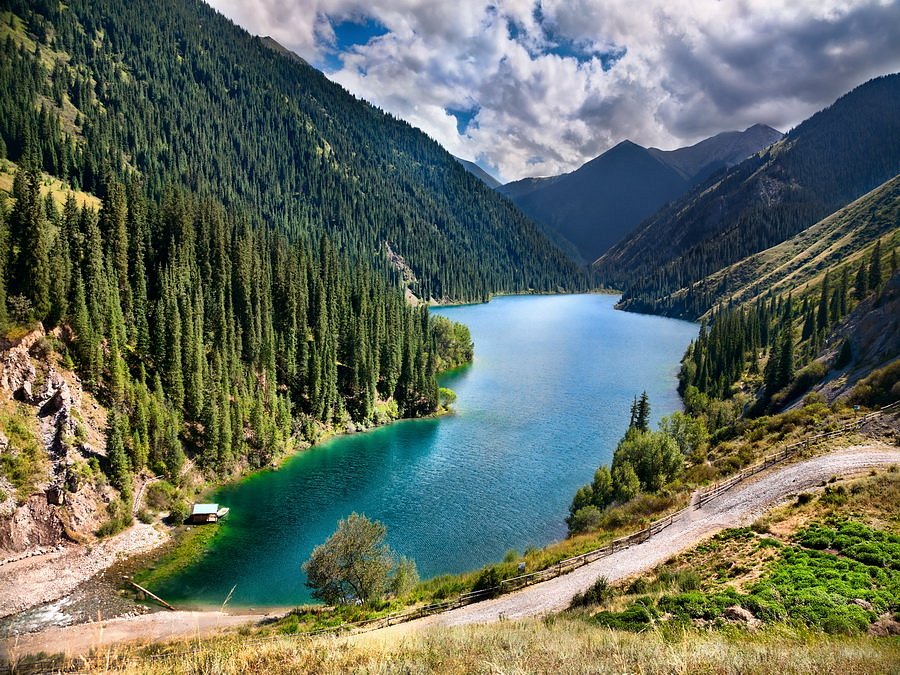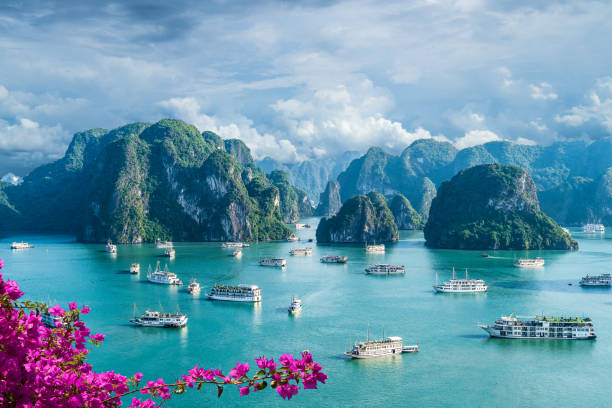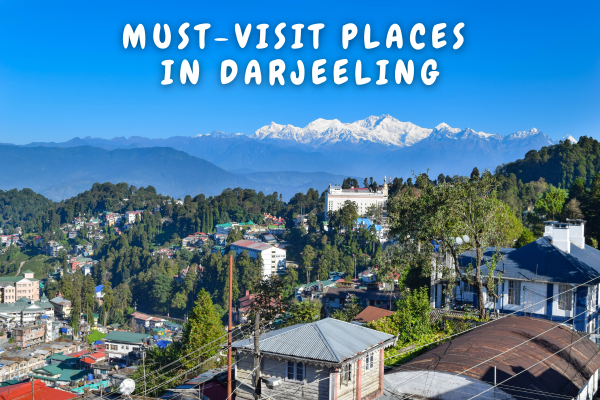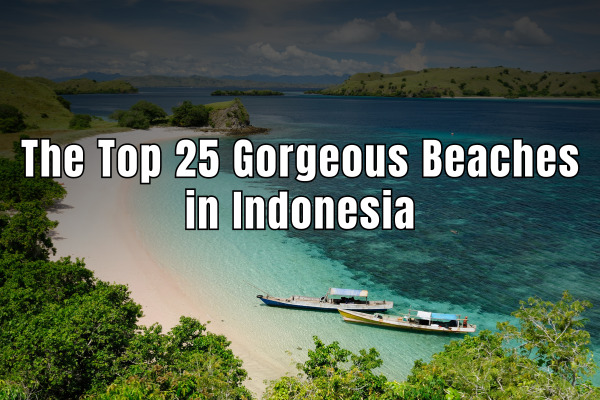

Travel planning is a meticulous art that involves considering various factors to ensure a memorable and hassle-free trip. One of the most crucial elements in this process is timing.
The timing of your journey can greatly influence your overall experience, and today, we’re here to delve into a topic that often gets overlooked: the unfavorable times to visit the Maldives.
While the Maldives is undeniably a dream destination, its picture-perfect beauty and tropical allure can be overshadowed during certain periods of the year. In this article, we’ll guide you through the less-than-ideal times to explore this paradise in the Indian Ocean.
By the end of this journey, you’ll be equipped with the knowledge needed to make an informed decision and ensure your visit to the Maldives is as enchanting as you’ve always imagined. So, let’s dive in and uncover the worst time to visit Maldives.
Understanding Maldives’ Seasons | Worst Time to Visit Maldives
Before you pack your bags and head to the Maldives, it’s essential to acquaint yourself with the archipelago’s unique climate. The Maldives experiences two distinct seasons that play a pivotal role in shaping your travel experience: the dry season and the wet season.
The Maldives is renowned for its tropical climate, which attracts tourists from all over the world. The archipelago experiences a consistent and pleasant temperature throughout the year, making it an ideal destination for those seeking sun, sand, and sea.
Located just north of the equator in the Indian Ocean, the Maldives enjoys a warm and humid climate. With temperatures ranging between 24°C (75°F) to 31°C (88°F), visitors can expect balmy weather no matter what time of year they choose to visit.
The Maldivian climate is influenced by two monsoon seasons – the southwest monsoon from May to October and the northeast monsoon from November to April. These monsoons bring periodic rainfall and slightly cooler temperatures but do not significantly impact travel plans or activities.
One of the unique features of this tropical paradise is its abundant sunshine. On average, you can expect around eight hours of sunshine per day throughout most months. This makes it perfect for lazing on white sandy beaches or indulging in water sports such as snorkeling and diving.
With rising concerns about climate change, sustainable practices have become increasingly important in preserving this delicate ecosystem. Many resorts in the Maldives have adopted eco-friendly initiatives like solar power usage, waste management systems, and coral reef conservation efforts.
The Dry Season:
The dry season, often referred to as the “northeast monsoon,” typically spans from November to March. During this time, the Maldives basks in clear skies, plenty of sunshine, and relatively low humidity.
These months are synonymous with postcard-perfect weather, making them the prime travel window for sunseekers and water sports enthusiasts. Snorkeling, diving, and beachcombing are at their finest during this period.
The Wet Season:
Conversely, the “southwest monsoon” ushers in the wet season, which typically extends from May to October. During these months, the Maldives experiences increased rainfall, stronger winds, and higher humidity levels.
While the wet season doesn’t necessarily mean constant rain, it does bring a higher likelihood of unpredictable weather patterns, including occasional storms and heavy downpours.
The Significance of Weather Knowledge:
Understanding these seasonal nuances is key to planning a successful trip to the Maldives. Your choice of when to visit will significantly impact your overall experience, from the activities you can enjoy to the kind of landscapes you’ll encounter.
Knowing the local weather patterns will help you make informed decisions about the best time to visit based on your preferences.
In the following sections, we’ll delve deeper into the specifics of these seasons and explore how they affect your Maldivian adventure.
Whether you’re seeking uninterrupted sunshine or prefer the charm of the wet season, this knowledge will empower you to choose the ideal time for your dream vacation in this tropical paradise.
When to Visit Maldives: Month-by-Month Guide From January to December
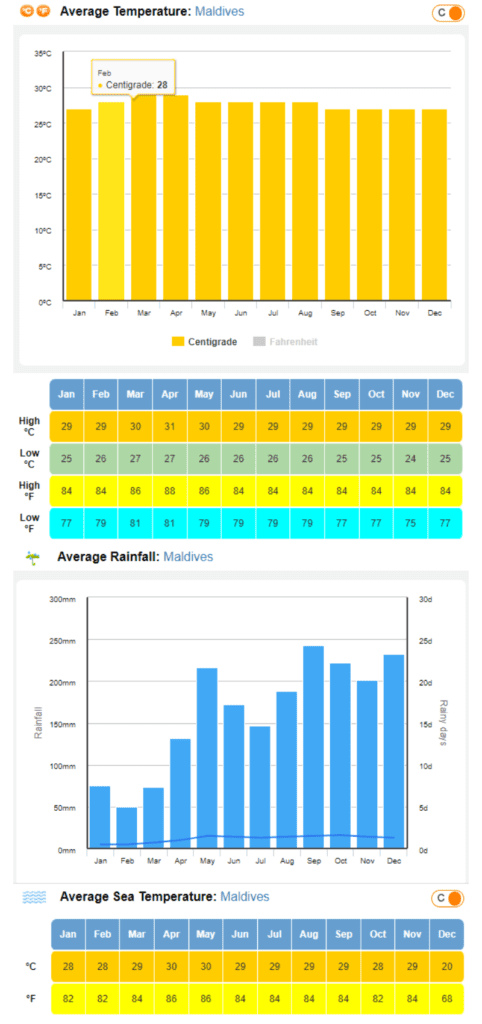

The Maldives is a popular tourist destination known for its stunning beaches, crystal-clear waters, and vibrant marine life. The best time to visit depends on your preferences for weather and activities. Here’s a month-by-month guide to help you plan your trip to the Maldives, including temperature ranges:
1. January
- Temperature: 26°C – 31°C (79°F – 88°F)
- Weather: Dry and sunny, ideal for water sports and diving.
2. February
- Temperature: 26°C – 31°C (79°F – 88°F)
- Weather: Similar to January, perfect for beach activities.
3. March
- Temperature: 27°C – 32°C (81°F – 90°F)
- Weather: Pleasant weather continues, with little rainfall.
4. April
- Temperature: 27°C – 32°C (81°F – 90°F)
- Weather: The dry season continues, and the sea is calm.
5. May
- Temperature: 27°C – 32°C (81°F – 90°F)
- Weather: The transition to the wet season begins, but May can still be a good time to visit with occasional showers.
6. June
- Temperature: 26°C – 31°C (79°F – 88°F)
- Weather: Start of the wet season with more frequent rain, but it’s less crowded.
7. July
- Temperature: 26°C – 30°C (79°F – 86°F)
- Weather: Wet season with occasional storms, but underwater visibility is excellent for diving.
8. August
- Temperature: 26°C – 30°C (79°F – 86°F)
- Weather: Similar to July, with occasional rain.
9. September
- Temperature: 26°C – 30°C (79°F – 86°F)
- Weather: Rainy season continues, but prices are lower and the crowds are thinner.
10. October
- Temperature: 26°C – 30°C (79°F – 86°F)
- Weather: Rainfall decreases towards the end of the month, making it a good time to visit.
11. November
- Temperature: 26°C – 30°C (79°F – 86°F)
- Weather: Dry season begins, and the weather becomes more stable.
12. December
- Temperature: 26°C – 31°C (79°F – 88°F)
- Weather: Ideal weather with sunny days, perfect for water activities and relaxation.
Keep in mind that the Maldives experiences two main seasons: the dry northeast monsoon (December to March) and the wet southwest monsoon (May to November). The transition months (April and October) can offer a mix of both weather patterns. Your choice of when to visit should depe
The Monsoon Impact on Tourism in Maldives


To truly grasp the nuances of the Maldivian climate, we must delve into the influence of the two dominant monsoon seasons: the Southwest Monsoon and the Northeast Monsoon.
These monsoons are instrumental in shaping the Maldives’ weather patterns, and understanding their characteristics and effects is essential for any traveler.
The Southwest Monsoon (Hulhangu)
Characteristics:
- The Southwest Monsoon, locally known as “Hulhangu,” typically arrives in the Maldives between May and October.
- It brings moist air from the southwest, resulting in increased humidity levels.
- During this monsoon, the Maldives experiences a higher frequency of rain showers, thunderstorms, and occasional heavy rainfall.
- Strong winds are common, which can lead to choppy seas and potentially disrupt outdoor activities.
Impact on Travel:
- The Southwest Monsoon can disrupt travel plans, especially for water-based activities like snorkeling, diving, and boat excursions.
- Sea conditions may be less favorable for water sports, and some dive sites may be temporarily closed due to rough seas.
- Frequent rain showers can limit sunbathing and outdoor exploration.
The Northeast Monsoon (Iruvai)
Characteristics:
- The Northeast Monsoon, or “Iruvai,” prevails in the Maldives from November to March.
- It originates from the northeast, bringing drier and cooler air.
- The weather is generally stable with clear skies, making it the dry season.
- Humidity levels are lower during this period.
Impact on Travel:
- The Northeast Monsoon is the peak tourist season, offering ideal conditions for water sports, snorkeling, and diving.
- Travelers can expect minimal rainfall and calm seas, enhancing the overall Maldivian experience.
- Outdoor activities and beach relaxation are at their best during this season.
Emphasizing Monsoon Disruptions:
It’s crucial to recognize that monsoons can significantly disrupt travel plans and experiences in the Maldives. Choosing the wrong season may lead to canceled activities, limited exploration opportunities, and less-than-ideal weather conditions these can play a role in the worst time to visit Maldives.
Therefore, travelers must factor in the monsoons when planning their Maldivian adventure.
In the upcoming sections, we will further explore the implications of these monsoons, including the months with the highest rainfall and the risk of cyclones, to help you make an informed decision about when to visit the Maldives. Here you can check Maldives weather before visiting.
Rainfall and Storms


Now that we’ve delved into the monsoon seasons, let’s take a closer look at the specific months when rainfall is at its peak in the Maldives and the potential consequences for outdoor activities. Additionally, we’ll address the critical topic of cyclones and their impact on travelers.
Rainiest months in the Maldives:
The Maldives experiences its highest rainfall during the wet season, which corresponds to the Southwest Monsoon (Hulhangu). Here’s a breakdown of the rainiest months:
- June: Rainfall begins to increase, with occasional heavy showers.
- July: Rainfall peaks during this month, with frequent rain showers and thunderstorms.
- August: High rainfall continues, often accompanied by gusty winds and stormy weather.
- September: Rainfall remains substantial, making it one of the wettest months of the year.
Impact on Outdoor Activities:
The elevated rainfall during these months can have several implications for travelers:
- Water Sports: Activities like snorkeling, diving, and water excursions may be affected by reduced visibility and rough sea conditions.
- Beach Time: Frequent rain showers can limit beach time and sunbathing opportunities.
- Outdoor Exploration: Exploring the Maldivian islands may be hindered by wet and slippery conditions.
Risk of Cyclones:
In addition to heavy rainfall, the Maldives faces the risk of cyclones, especially during the wet season. Storms like cyclones can cause flooding, violent winds, and heavy rain. While cyclones are relatively rare, it’s crucial to be aware of the potential consequences for travelers:
- Travel Disruptions: Cyclones can lead to flight cancellations, boat trips being halted, and temporary closure of resorts and attractions.
- Safety Concerns: Travelers should follow local advisories and take safety precautions if a cyclone warning is issued.
- Itinerary Changes: Itineraries may need to be adjusted, and flexibility is key during cyclone-prone periods.
Planning for Rainfall and Cyclones:
Travelers should consider their risk tolerance and preferences when planning a trip to the Maldives. If you prioritize sunny skies and calm seas, it’s advisable to visit during the dry season (Northeast Monsoon).
However, if you’re open to unique experiences and lower prices, the wet season may offer its own charm, provided you’re prepared for potential disruptions.
In the following sections, we’ll explore ways to make the most of your Maldivian adventure during both wet and dry seasons, helping you choose the best time based on your travel goals and priorities.
Tourism Peaks vs. Off-Peaks | Worst Time to Visit Maldives


As we continue our exploration of the worst times to visit the Maldives, it’s essential to understand how these times often align with the off-peak tourist seasons.
In this section, we’ll delve into the advantages and disadvantages of traveling during both peak and off-peak periods, empowering you to make an informed decision that aligns with your travel preferences.
Off-Peak Seasons (Worst Times):
Coinciding with the Southwest Monsoon (Hulhangu)
Advantages:
- Lower Prices: Traveling during the off-peak season often means significant cost savings on accommodations, flights, and activities.
- Fewer Crowds: The Maldives sees fewer tourists during these times, offering a more tranquil and secluded experience.
- Exclusive Deals: Resorts and hotels may offer exclusive promotions and discounts to attract visitors during less crowded periods.
Disadvantages:
- Unpredictable Weather: The wet season can bring unpredictable weather patterns, including frequent rain showers and storms, which may disrupt plans.
- Limited Water Activities: Rough seas can limit water-based activities like snorkeling and diving.
- Reduced Visibility: Rainfall and cloud cover can reduce visibility for underwater exploration.
Peak Seasons (Best Times):
Corresponding with the Northeast Monsoon (Iruvai)
Advantages:
- Optimal Weather: The dry season ensures stable weather conditions, with plenty of sunshine and clear skies.
- Superb Water Activities: Ideal conditions for snorkeling, diving, and water sports, with excellent underwater visibility.
- Vibrant Marine Life: Clear waters during the dry season provide opportunities for unforgettable encounters with marine life.
Disadvantages:
- High Prices: The peak season is the most popular time to visit, resulting in higher prices for accommodations and activities.
- Crowded Attractions: The Maldives can be bustling with tourists during the dry season, leading to crowded beaches and popular attractions.
- Limited Availability: Popular resorts may get fully booked quickly, limiting choices for travelers who don’t plan ahead.
Choosing the Right Season for You:
Ultimately, the choice of when to visit the Maldives depends on your travel goals and priorities. If you value budget-friendly options and don’t mind occasional rain, the off-peak season can offer unique advantages.
However, if you’re seeking the quintessential Maldivian experience with perfect weather, the dry season is the ideal time.
In the subsequent sections, we’ll provide tips for making the most of your trip during both peak and off-peak seasons, helping you tailor your Maldivian adventure to your preferences.
When to Visit Maldives: Month-by-Month Guide From January to December
The Maldives is a popular tourist destination known for its stunning beaches, crystal-clear waters, and vibrant marine life. The best time to visit depends on your preferences for weather and activities. Here’s a month-by-month guide to help you plan your trip to the Maldives, including temperature ranges:
1. January
- Temperature: 26°C – 31°C (79°F – 88°F)
- Weather: Dry and sunny, ideal for water sports and diving.
2. February
- Temperature: 26°C – 31°C (79°F – 88°F)
- Weather: Similar to January, perfect for beach activities.
3. March
- Temperature: 27°C – 32°C (81°F – 90°F)
- Weather: Pleasant weather continues, with little rainfall.
4. April
- Temperature: 27°C – 32°C (81°F – 90°F)
- Weather: The dry season continues, and the sea is calm.
5. May
- Temperature: 27°C – 32°C (81°F – 90°F)
- Weather: The transition to the wet season begins, but May can still be a good time to visit with occasional showers.
6. June
- Temperature: 26°C – 31°C (79°F – 88°F)
- Weather: Start of the wet season with more frequent rain, but it’s less crowded.
7. July
- Temperature: 26°C – 30°C (79°F – 86°F)
- Weather: Wet season with occasional storms, but underwater visibility is excellent for diving.
8. August
- Temperature: 26°C – 30°C (79°F – 86°F)
- Weather: Similar to July, with occasional rain.
9. September
- Temperature: 26°C – 30°C (79°F – 86°F)
- Weather: Rainy season continues, but prices are lower and the crowds are thinner.
10. October
- Temperature: 26°C – 30°C (79°F – 86°F)
- Weather: Rainfall decreases towards the end of the month, making it a good time to visit.
11. November
- Temperature: 26°C – 30°C (79°F – 86°F)
- Weather: Dry season begins, and the weather becomes more stable.
12. December
- Temperature: 26°C – 31°C (79°F – 88°F)
- Weather: Ideal weather with sunny days, perfect for water activities and relaxation.
Keep in mind that the Maldives experiences two main seasons: the dry northeast monsoon (December to March) and the wet southwest monsoon (May to November). The transition months (April and October) can offer a mix of both weather patterns. Your choice of when to visit should depend on your preference for dry or wet weather and your interest in water sports and marine life.
Best Time to Visit Maldives
The best time to visit the Maldives depends on your preferences and what you want to do during your trip. The Maldives experience two distinct seasons: the dry season (caused by the northeast monsoon) and the wet season (caused by the southwest monsoon).
The two seasons are broken out as follows:
Dry Season (November to March):
- The Maldives’ busiest travel time is now.
- The weather is generally sunny and dry, with very little rainfall.
- Visibility for snorkeling and diving is excellent during this period, making it a popular time for water activities.
- December to April is considered the high season, with slightly higher prices and more tourists.
Wet Season (May to October):
- This is the off-peak season and is also known as the “green season.”
- There is a higher chance of rainfall, especially from June to August.
- However, the rain usually comes in short, heavy bursts, so it may not ruin your entire day.
- The Maldives’ vegetation is lush and green during this time, making it a great time for nature enthusiasts and photographers.
- Hotel prices and crowds are generally lower during the wet season, making it a more budget-friendly option.
If you prefer sunny and dry weather for activities like swimming, snorkeling, and diving, the dry season (especially from December to April) is the best time to visit. However, keep in mind that this is also the most crowded and expensive time.
If you’re looking for a more budget-friendly trip and don’t mind occasional rain, the wet season can be a good option, especially from May to October. Just be prepared for the possibility of short rain showers during your stay.
Ultimately, the best time to visit the Maldives depends on your personal preferences, budget, and the type of experience you’re seeking.
Balancing Cost and Experience | Worst Time to Visit Maldives


For budget-conscious travelers, visiting the Maldives during less favorable times can be a strategic choice that allows you to enjoy this tropical paradise without breaking the bank.
In this section, we’ll explore how you can make the most of your trip during these off-peak periods and embrace the beauty of the Maldives while keeping your budget in check.
1. Seize Budget-Friendly Deals:
During the off-peak season, resorts and hotels often offer enticing discounts and promotions to attract visitors. Take advantage of these cost-saving opportunities by researching and booking accommodations well in advance. Look for packages that include meals and activities, providing additional value for your money.
2. Plan Indoor and Cultural Activities to get ride of worst time to visit Maldives:
While the wet season may bring occasional rain, it doesn’t mean your entire trip has to be a washout. Plan indoor and cultural activities to explore the Maldives beyond its beaches and waters. Visit local markets, museums, and historical sites to immerse yourself in the Maldivian culture.
3. Embrace Rainy Days:
Don’t let rainy days dampen your spirits. Use these moments to relax, unwind, and rejuvenate. Many resorts offer spa services, wellness programs, and cooking classes that can be enjoyed indoors. Use this chance to treat yourself and practice self-care.
4. Flexible Itinerary:
When traveling during less favorable times, flexibility is your ally. Be prepared to adjust your itinerary based on weather conditions. If a planned outdoor activity is disrupted due to rain, have backup options like exploring the resort’s facilities or enjoying a leisurely indoor meal.
5. Wildlife and Marine Encounters:
The wet season can provide unique opportunities for wildlife and marine encounters. Rain can attract various species of birds, and underwater visibility may improve after a heavy downpour, offering excellent snorkeling and diving experiences.
6. Travel Insurance:
Consider purchasing travel insurance that covers trip disruptions due to adverse weather conditions. This will provide peace of mind knowing that you can recoup some costs if your plans are impacted by the weather.
7. Packing Essentials:
Pack appropriately for the wet season. Include waterproof gear, such as rain jackets, umbrellas, and waterproof bags for your electronics and essentials.
By adopting these strategies and maintaining a positive attitude, you can enjoy a memorable and budget-friendly trip to the Maldives, even during less-than-ideal weather conditions.
Remember that every season in the Maldives offers its unique charm and experiences, and with careful planning, you can savor the magic of this tropical paradise without overspending.
Alternative Experiences | Avoid Worst Time to Visit Maldives


Traveling during the off-peak seasons in the Maldives isn’t just about cost savings; it also opens the door to unique and exclusive experiences that you won’t find during the bustling peak tourist periods.
In this section, we’ll delve into some of these alternative experiences and offer recommendations for travelers who value tranquility and solitude.
1. Private Island Retreats:
During the off-peak seasons, you can often find exceptional deals on private island resorts. These secluded paradises offer unmatched tranquility and exclusivity. Imagine having an entire island virtually to yourself, with pristine beaches, crystal-clear waters, and personalized service.
2. Wildlife Encounters:
The wet season brings out the lush beauty of the Maldivian islands, attracting various wildlife species. Birdwatching enthusiasts can spot migratory birds that visit during this time. On some islands, you may even encounter sea turtles nesting along the shores, providing a unique and memorable experience.
3. Cultural Immersion:
Embrace the local culture by participating in cultural events and activities that are more readily available during off-peak seasons. You can attend traditional Maldivian dance performances, learn about local craftsmanship, and savor authentic cuisine.
4. Less Crowded Diving and Snorkeling:
While the wet season may present occasional challenges for water activities, it also offers quieter underwater experiences. Dive sites and snorkeling spots are less crowded, allowing you to explore the vibrant marine life at your own pace.
5. Spa and Wellness Retreats:
Indulge in self-care and relaxation at the Maldives’ world-class spas and wellness centers. During the off-peak season, you’re more likely to secure coveted spa appointments and enjoy serene spa facilities in a peaceful atmosphere.
6. Sunset and Stargazing:
The Maldives’ night skies are a sight to behold. With reduced light pollution during the off-peak seasons, you can savor breathtaking sunsets and stargazing sessions right from your overwater bungalow or the beach.
7. Island Hopping:
Explore multiple islands at a leisurely pace. Off-peak times allow you to hop from one island to another with ease, discovering hidden gems and interacting with locals without the hustle and bustle of peak-season crowds.
8. Romantic Getaways:
For couples seeking a romantic escape, the off-peak seasons provide an intimate setting. Enjoy candlelit dinners on the beach, private sunset cruises, and the serenity of secluded beaches.
9. Water Villas and Overwater Bungalows:
Secure coveted water villa or overwater bungalow accommodations at a more affordable rate during the off-peak season. Enjoy breathtaking ocean views and easy access to the water when you wake up.
Whether you’re seeking solitude, wildlife encounters, or unique cultural experiences, the Maldives’ off-peak seasons offer a wealth of opportunities to make your visit truly special.
By embracing the distinctive charm of these quieter periods, you can create memories that will last a lifetime.
Planning Your Maldives Trip to Avoid Worst Time to Visit Maldives


Planning a trip to the Maldives, especially during the off-peak seasons, requires careful consideration and preparation. In this section, we’ll provide practical advice on how to plan your Maldives trip, covering essential aspects such as booking accommodations, flights, and activities. We’ll also suggest valuable tools and resources for monitoring weather conditions and making informed decisions.
1. Booking Accommodations:
- Start your search well in advance to secure the best deals, especially during off-peak seasons.
- Consider staying in private island resorts for a more exclusive and tranquil experience.
- Read reviews and seek recommendations from fellow travelers to choose accommodations that align with your preferences.
2. Flights and Transfers:
- Look for flight deals and promotions, and be flexible with your travel dates to find the most affordable options.
- Plan your arrival and departure times to coincide with resort check-in/check-out policies.
- Check if your resort offers airport transfers, or arrange transportation in advance to avoid last-minute hassles.
3. Activities and Excursions:
- Research and book activities and excursions that interest you ahead of time, especially if they have limited availability.
- Discuss activity options with your chosen resort to ensure they align with your travel dates and preferences.
- Consider both water-based activities like snorkeling and diving and on-land experiences like island hopping and cultural tours.
4. Packing Essentials:
- Pack appropriate clothing for the season, including lightweight and breathable attire for the wet season and sun protection for the dry season.
- Don’t forget essentials like sunscreen, insect repellent, medications, and adaptors for Maldives’ power outlets.
5. Travel Insurance:
- Purchase comprehensive travel insurance that covers trip cancellations, delays, and disruptions due to weather conditions.
- Read the policy thoroughly and understand what is covered to ensure peace of mind during your trip.
6. Monitoring Weather Conditions:
- Use reliable weather forecasting websites and apps to stay updated on the Maldives’ weather conditions.
- Popular weather sources like AccuWeather, The Weather Channel, and the Maldives Meteorological Service can provide real-time information.
- Keep an eye on cyclone warnings and advisories, and be prepared to adjust your plans if necessary.
7. Travel Forums and Blogs:
- Join travel forums and communities where you can seek advice from experienced travelers who have visited the Maldives during different seasons.
- Read travel blogs and articles for firsthand accounts and recommendations.
8. Local Tourism Resources:
- Explore the official Maldives tourism website for information on accommodations, activities, and travel regulations.
- Contact the Maldives Tourism Promotion Board for additional guidance and resources.
9. Resort Communication:
- Prior to your trip, communicate with your chosen resort or accommodation to confirm reservations, activities, and any special requests.
- By following these practical steps and utilizing valuable tools and resources, you can plan a well-informed and enjoyable trip to the Maldives. Whether you choose to visit during the peak season or the off-peak seasons, thorough planning will ensure that you make the most of your Maldivian adventure while staying safe and comfortable.
Conclusion
In closing, we’ve journeyed through the various facets of timing your visit to the Maldives, considering both the highs and lows of this stunning tropical paradise. Let’s recap the key takeaways from our exploration:
- Understanding Maldives’ Seasons: The Maldives experiences two main seasons—the dry season (Northeast Monsoon) and the wet season (Southwest Monsoon). Your choice of timing significantly influences your overall experience.
- The Monsoon Impact: Delving into the Southwest and Northeast Monsoons, we discovered how these weather systems shape conditions and can impact travel plans.
- Rainfall and Storms: We highlighted the months with the highest rainfall, which coincide with the off-peak season. Cyclones, although infrequent, pose a potential risk to travelers during the wet season.
- Tourism Peaks vs. Off-Peaks: We explored the advantages and disadvantages of traveling during both peak and off-peak seasons, catering to different travel preferences and budgets.
- Balancing Cost and Experience: Budget-conscious travelers can find savings during the off-peak season by capitalizing on discounts and adopting flexible travel strategies.
- Alternative Experiences: Off-peak periods offer unique opportunities, from private island retreats to wildlife encounters, appealing to travelers seeking tranquility and exclusivity.
- Planning Your Maldives Trip: Practical tips for booking accommodations, flights, and activities were provided, along with suggestions for monitoring weather conditions and staying informed.
As you plan your Maldives adventure, remember that the best time to visit depends on your priorities. Whether you crave sunny skies and water sports or seek solitude and unique encounters, the Maldives offers something for everyone.
Consider your preferences, budget, and appetite for adventure when making your decision.
Ultimately, every season in the Maldives has its own charm and allure. Whether you’re drawn to the vibrant energy of the peak season or enticed by the serenity of the off-peak periods, the Maldives promises a memorable and enchanting experience. So, as you embark on your journey to this tropical paradise, choose your timing wisely, and savor the magic of the Maldives in a way that resonates with your heart and soul.
To assist you further in planning your Maldives trip and staying informed about weather conditions, here are some valuable resources:
1. Official Maldives Tourism Websites:
- Maldives Tourism Official Website: The official tourism website of the Maldives offers comprehensive information on accommodations, activities, and travel regulations.
- Maldives Tourism Promotion Board: The official government website provides insights into tourism policies and regulations.
2. Weather Resources:
- Maldives Meteorological Service: The official meteorological service of the Maldives provides real-time weather updates, forecasts, and cyclone warnings.
- AccuWeather: A reliable source for global weather information, including forecasts for the Maldives.
3. Travel Forums and Communities:
- TripAdvisor Maldives Forum: A popular travel forum where you can ask questions, share experiences, and seek advice from fellow travelers.
- Lonely Planet Maldives Forum: The Lonely Planet forum offers insights and recommendations for travel in the Maldives.
4. Travel Blogs and Articles:
Travel blogs and articles from travelers who have shared their experiences and tips for visiting the Maldives during different seasons. Example – Top 10 Places to Visit in The World – Blogs
These resources will provide you with a wealth of information and insights to enhance your trip planning and ensure you have a safe and enjoyable visit to the Maldives.
Frequently Asked Questions (FAQs)
-
When is the worst time to visit the Maldives in terms of weather?
The worst time, weather-wise, is typically during the wet southwest monsoon season, which occurs from May to November. This period sees more rainfall, stronger winds, and a higher chance of storms.
-
Which month to avoid Maldives?
To minimize the risk of rain and storms, it’s advisable to avoid the Maldives during the peak of the wet southwest monsoon season, from May to November. June to August, in particular, sees more rainfall. However, keep in mind that even during the wet season, there can be sunny days and unique experiences. For more stable and sunny weather, consider visiting during the dry northeast monsoon season, from December to March, though prices may be higher.
-
Is there a bad time of year to go to the Maldives?
There isn’t a universally “bad” time to visit the Maldives, but it depends on your preferences. The wet southwest monsoon season, from May to November, brings more rain and occasional storms, so if you prefer sunny weather, it’s best to avoid this period. Conversely, the dry northeast monsoon season, from December to March, offers ideal weather conditions but comes with higher prices and more tourists.
-
Which month is rainy season in Maldives?
The rainy season in the Maldives typically occurs during the wet southwest monsoon, which runs from May to November. This period sees an increase in rainfall, stronger winds, and a higher chance of storms. While the Maldives can still be visited during these months, it’s essential to be prepared for wetter weather and the possibility of occasional heavy rain. If you prefer drier and more stable weather, it’s advisable to visit during the dry northeast monsoon season, which runs from December to March.
-
What are the most expensive months in Maldives?
The most expensive months to visit the Maldives are typically during the dry northeast monsoon season, which runs from December to March. This period is considered the peak tourist season due to the excellent weather conditions, with sunny days and minimal rainfall. As a result, demand for accommodations and activities is high, leading to higher prices for resorts, hotels, and other services. If you’re looking to save on your trip to the Maldives, consider visiting during the wet southwest monsoon season, from May to November, when prices tend to be lower due to the increased chance of rain and storms.
-
How many days is best for Maldives?
A typical Maldives vacation is often best enjoyed in 5 to 7 days. This duration allows you to fully experience the breathtaking beaches, water activities, and relaxation the Maldives offers. However, the ideal length can vary based on your interests, budget, and desire for a short escape or an extended stay.
-
How much money is enough in Maldives?
A daily budget of around $200 to $300 per person should cover accommodations, meals, and some activities in the Maldives. However, luxurious resorts can cost significantly more. Budget travelers can find guesthouses and local eateries to reduce costs, while those seeking upscale experiences should budget accordingly for higher-end resorts and activities.


